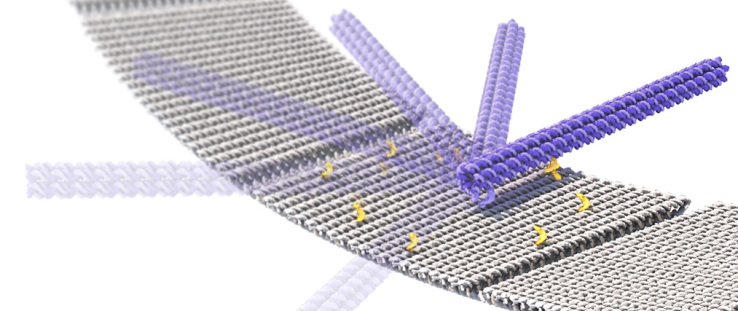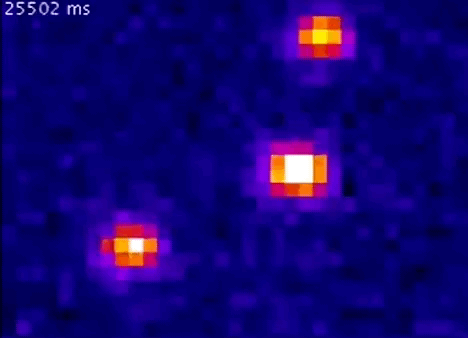

Things aren’t going well down at the ol’ nano-factory. They’re having trouble getting all those tiny workers to synchronize and move quickly together. But leave it to the Germans to get things running smoothly! All it took was a careful application of that newfangled technology “electricity.”
Tiny nano-scale machines formed from DNA could be the future of manufacturing things at small scale but great volume: drugs, tiny chip components and, of course, more nanomachines. But moving simple, reusable machines like a little arm half a micrometer long is more difficult than at human scale. Wires for signals aren’t possible at that scale, and if you want to move it with a second arm, how do you move that arm?
For a while chemical signals have been used; wash a certain solution over a nanobot and it changes its orientation, closes its grasping tip or what have you. But that’s slow and inexact.
Researchers at the Technical University of Munich were looking at ways to improve this situation of controlling machines at the molecular scale. They were working with “nano-cranes,” which are essentially a custom 400-nanometer strand of DNA sticking up out of a substrate, with a flexible base (literally — it’s made of unpaired bases) that lets it rotate in any direction. It’s more like a tiny robotic finger, but let’s not split hairs (or base pairs).
What Friedrich Simmel and his team found, or rather realized the potential of, was that DNA molecules and therefore these nano-cranes have a negative charge. So theoretically, they should move in response to electric fields. And that’s just what they did.
 They attached tiny fluorescent pigment molecules to the tips of the cranes so they could see what they were doing in real time, then observed the cranes as the electric field surrounding them was carefully changed.
They attached tiny fluorescent pigment molecules to the tips of the cranes so they could see what they were doing in real time, then observed the cranes as the electric field surrounding them was carefully changed.
To their great delight, the cranes moved exactly as planned, switching from side to side, spinning in a circle, and so on. These movements are accomplished, the researchers say, at a hundred thousand times the speed they would have been using chemicals.

A microscopic image of the nano-crane’s range of motion, with the blue and red indicating selected stop points.
“We came up with the idea of dropping biochemical nanomachine switching completely in favor of the interactions between DNA structures and electric fields,” said Simmel in a TUM news release. “The experiment demonstrated that molecular machines can be moved, and thus also driven electrically… We can now initiate movements on a millisecond time scale and are thus 100,000 times faster than with previously used biochemical approaches.”
And because the field provides the energy, this movement can be used to push other molecules around — though that hasn’t been demonstrated just yet.
But it’s not hard to imagine millions of these little machines working in vast (to them) fields, pushing component molecules toward or away from each other in complex processes or rolling products along, “not unlike an assembly line,” as Simmel put it.
The team’s work, which like most great research seems obvious in retrospect, earned them the coveted cover story in Science.
Featured Image: TUM

